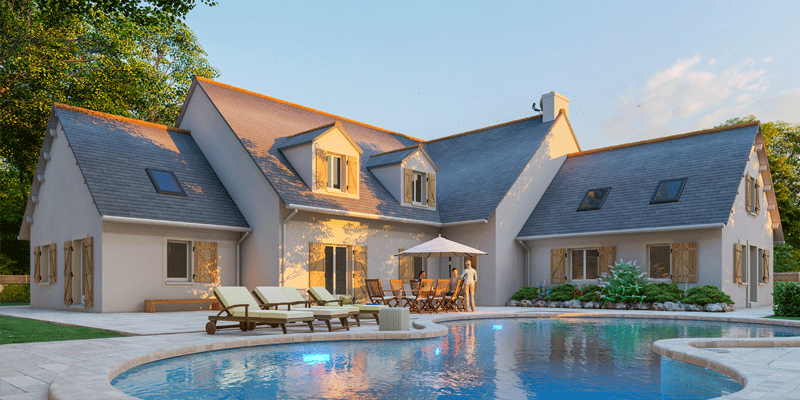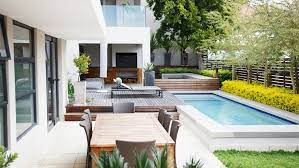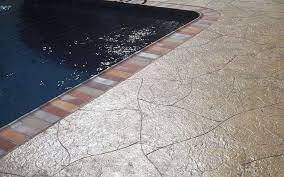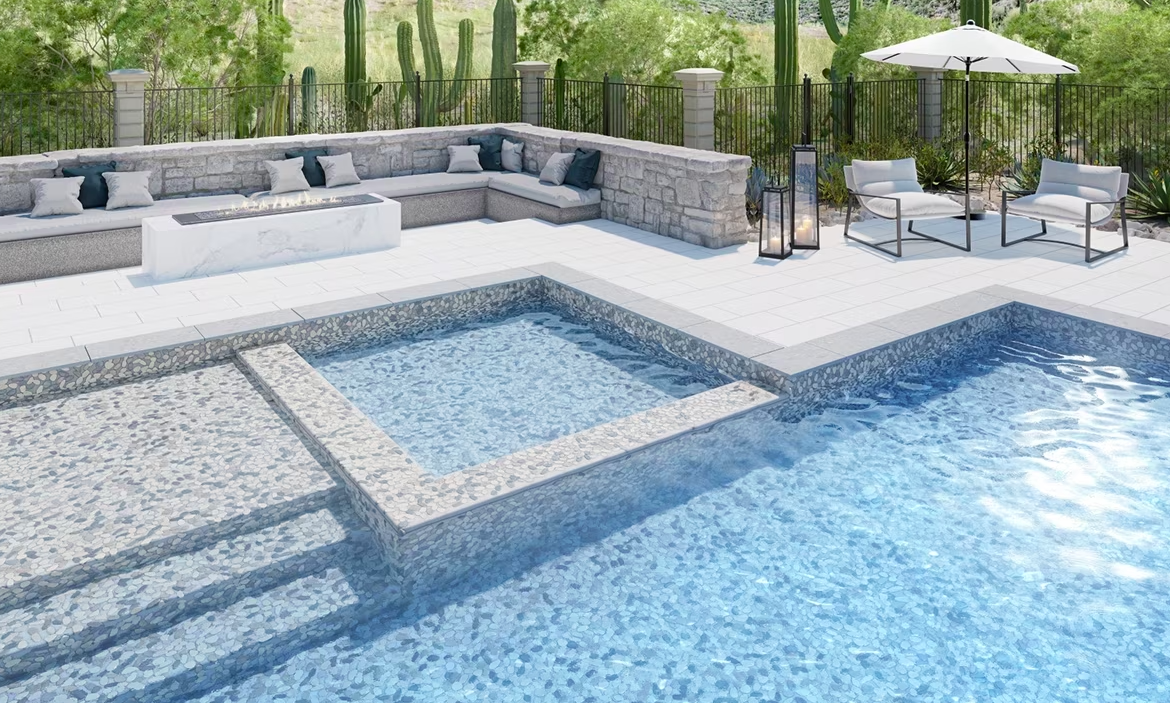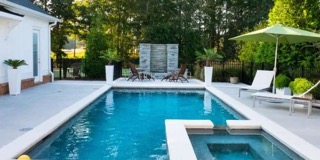If you currently have a pool or are considering a new installation, then building a surrounding deck is an important consideration. You will want to consider the materials that are available and work best for your pool area, as well as how the design of the deck will complement your pool’s overall aesthetic. A new pool deck can be a great way to enhance your swimming experience while also adding value to your home.
What Exactly is a Pool Deck?
A pool deck is a surrounding fixture that is built around the outside of any above-ground or in-ground swimming pool. The exact appearance and size can vary, depending on your aesthetic tastes and how you plan to use your pool. These structures often include a ground surface, stairs to access the pool area, and seating options.
If you already have a pool but your deck is missing these features, there are plenty of ways to add them quickly and easily. There are many different materials that can be used for a pool deck, but some are definitely more popular than others. Here are some of the most common choices:
Concrete:
This is a popular choice for garage floors, patios, and sidewalks! Many homeowners choose concrete for their pool decks because it is durable and long-lasting. It has a sleek appearance that offers nicely contrasting lines with the water. However, concrete must be properly maintained to ensure its longevity. A concrete pool deck can also be slippery when wet, so you may want to consider adding non-slip additives before installation or placing grip tape on the surface if you are worried about safety.
Stamped Concrete:
This is a popular concrete choice that is often used to mimic other materials, such as brick or flagstone. It can be textured to look like many different materials and has a wide variety of colors to choose from. This option is also durable and long-lasting, but it can be more expensive than traditional concrete.
Wood:
Outdoor wood structures are popular for their versatility and warm aesthetic, but they are mostly used in more casual swimming areas where homeowners have easy access to toys like inflatables and floats. Wood will absorb moisture over time, so it might not be the best choice for an area that often gets drenched by splashes of pool water. It can also be difficult to keep wood looking new, so you may need to perform more regular maintenance than other materials.
Vinyl:
This is a synthetic material that is often used for outdoor decking. It is low-maintenance and does not require any staining or painting. However, vinyl can be a bit slippery when wet. Vinyl is available in many different colors and styles, and it is a popular choice for families with young children who are worried about potential splinters from traditional wood decks.
Composite Decking:
This newer option is made of a blend of natural materials and manufactured products. Composite decking often contains recycled materials, making it environmentally friendly. It is non-slip, durable, and low-maintenance. Composite decking is available in many different colors and styles, so you can find the perfect option to match your home. However, it can be more expensive than some other materials.
No matter what material you choose for your pool deck, it is important to make sure that you consider all of your needs and wants before installation. Talk with a professional contractor about your options and what might work best for your home and swimming area!
Travertine:
Travertine is a type of limestone that is often used for flooring, countertops, and walls. It is a popular choice for pool decks because it is durable and easy to maintain. Travertine can be polished to a high sheen, or it can be left with a more natural appearance. This stone often comes in shades of tan, brown, and cream to compliment many different home styles. However, travertine can be expensive and difficult to install.
Pavers:
Pavers are another option for pool deck materials. These are small stones or bricks that are laid in a pattern to create a surface. Pavers come in many different colors, so you can find the perfect option to match your personality and your home. They are often used in casual pool areas to create a fun, beach-like vibe. However, pavers can be expensive and difficult to install.
Brick:
Outdoor brick structures are popular for their lovely appearance and simple lines. Brick is available in many colors and textures, so you will probably find the perfect style for your home. It does tend to get quite hot during the summer months, though! Preparing a brick surface is time-consuming and laborious, but once you have a well-maintained brick deck, it can last for many years without extensive maintenance efforts.
Flagstone: There is something about the rustic appeal of flagstones that makes them an incredibly popular choice for pool decks. Flagstones add a natural twist to the modern appeal of a swimming pool, and they can be rustic enough to fit into any casual backyard space. They are easy to care for and durable, but flagstone is expensive and difficult to install.
Stone:
Stone is a popular choice for pool decks because it is durable and easy to maintain. It is available in many different colors and styles, so you can find the perfect option to match your home. Stone does not require any regular maintenance, but it can be expensive to install.
Important Factors to Consider:
No matter what material you choose for your pool deck, there are a few important factors to keep in mind. First, you need to make sure that the material is durable and can stand up to the moisture and sun exposure that comes with a swimming pool. Second, you need to consider how easy the material is to maintain. Will you need to stain it or seal it every year? Is it resistant to fading? Finally, you should think about your budget. Some materials are more expensive than others. Talk with a professional contractor about your options and what might work best for your home and swimming area!

